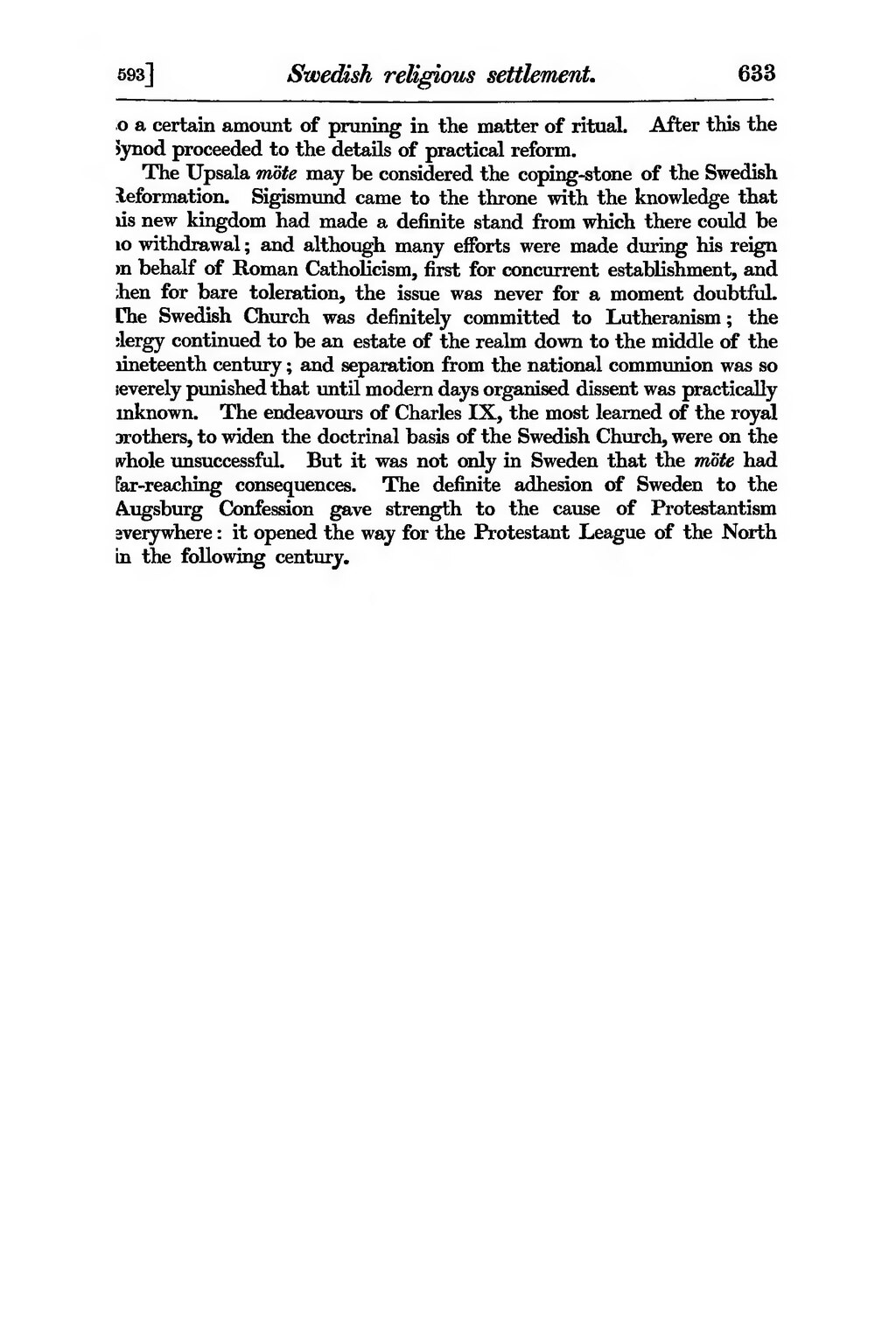a certain amount of pruning in the matter of ritual. After this the Synod proceeded to the details of practical reform.
The Upsala mote may be considered the coping-stone of the Swedish Reformation. Sigismund came to the throne with the knowledge that his new kingdom had made a definite stand from which there could be no withdrawal; and although many efforts were made during his reign on behalf of Roman Catholicism, first for concurrent establishment, and then for bare toleration, the issue was never for a moment doubtful. The Swedish Church was definitely committed to Lutheranism; the clergy continued to be an estate of the realm down to the middle of the nineteenth century; and separation from the national communion was so severely punished that until modern days organised dissent was practically unknown. The endeavours of Charles IX, the most learned of the royal brothers, to widen the doctrinal basis of the Swedish Church, were on the whole unsuccessful. But it was not only in Sweden that the mote had far-reaching consequences. The definite adhesion of Sweden to the Augsburg Confession gave strength to the cause of Protestantism everywhere: it opened the way for the Protestant League of the North in the following century.
